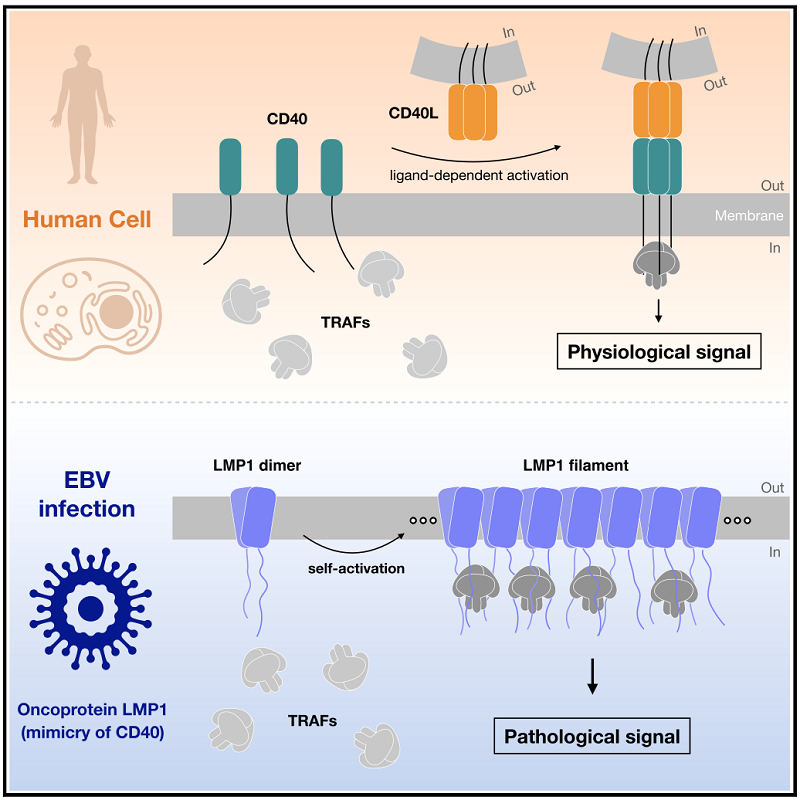Scientists Reveal Assembly and Activation Mechanism of EBV Oncoprotein LMP1
Scientists from the Institute of Biophysics, Chinese Academy of Sciences, reported the molecular basis of self-assembly and compositional activation of Latent Membrane Protein 1 (LMP1). They discovered that LMP1 undergoes oligomeric self-assembly through a novel mechanism that is different from previous speculations, and recruits downstream factors in an efficient way to activate and maintain the activation of pathogenic signals.
This study was published in Cell on July 11, 2024.
Epstein-Barr Virus (EBV) is a human herpesvirus that poses a significant threat to human health. LMP1 is a key oncogenic protein encoded by EBV and has long been considered an ideal target for differential diagnosis and targeted therapy of EBV-positive tumors. A fundamental open question about how LMP1 achieves ligand-independent assembly and activation is a critical obstacle to the successful development of LMP1-targeted intervention strategies.
The researchers successfully resolved cryo-EM structures of LMP1 in two unexpected assemblies: a symmetric homodimer and a higher-order filamentous oligomer. LMP1 adopts a non-canonical and unpredicted fold that supports the formation of a stable homodimer through tight and antiparallel inter-molecular stacking. The LMP1 dimer serves as the basic unit for higher-order assembly, with multiple dimers self-assembling in a side-by-side manner to form filamentous oligomeric structures.
Importantly, these high-resolution structural insights are supported by the observation of unique aggregation patterns of LMP1 observed in live-cell imaging, revealing the membrane clustering mechanism of LMP1 at different resolution scales. To further clarify the functional form of LMP1, the researchers systematically mutated the interfaces of dimers and oligomers. The results confirm that the oligomeric fibrous structure of LMP1 represents its activated state.
Through careful analysis, the researchers discovered that the filamentous assembly of LMP1 arranges an approximately equilateral triangular distribution for the cytoplasmic tails of adjacent LMP1 dimers, further facilitating recognition between the symmetric TRAF trimer and LMP1. The ligand-independent self-association ability and the large number of LMP1 molecules in each higher-order oligomer allow LMP1 to induce potent downstream signaling processes in a constitutive and ligand-independent manner.
This work addresses a long-standing challenge in the field, and the newly discovered mechanism and interface hold the promise for future development of LMP1-targeted intervention strategies.

Fig. Different Activation Mechanisms of CD40 and LMP1.
(Image by GAO Pu's group)
Article link: https://doi.org/10.1016/j.cell.2024.06.021
Contact: GAO Pu
Institute of Biophysics, Chinese Academy of Sciences
Beijing 100101, China
E-mail: gaopu@ibp.ac.cn
(Reported by Prof. GAO Pu's group)

